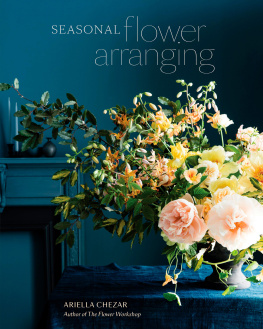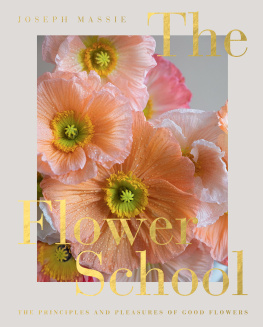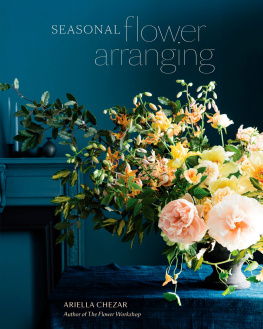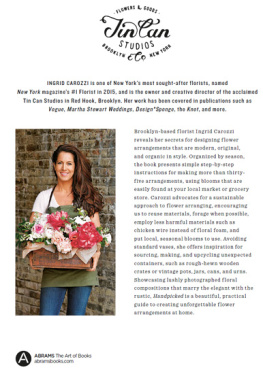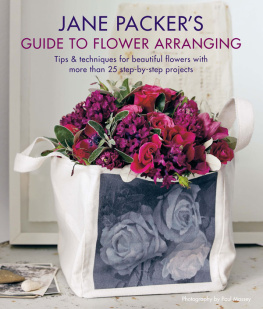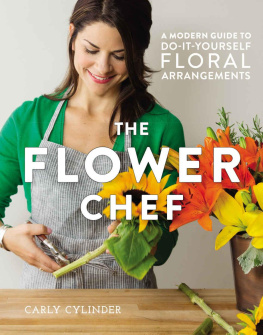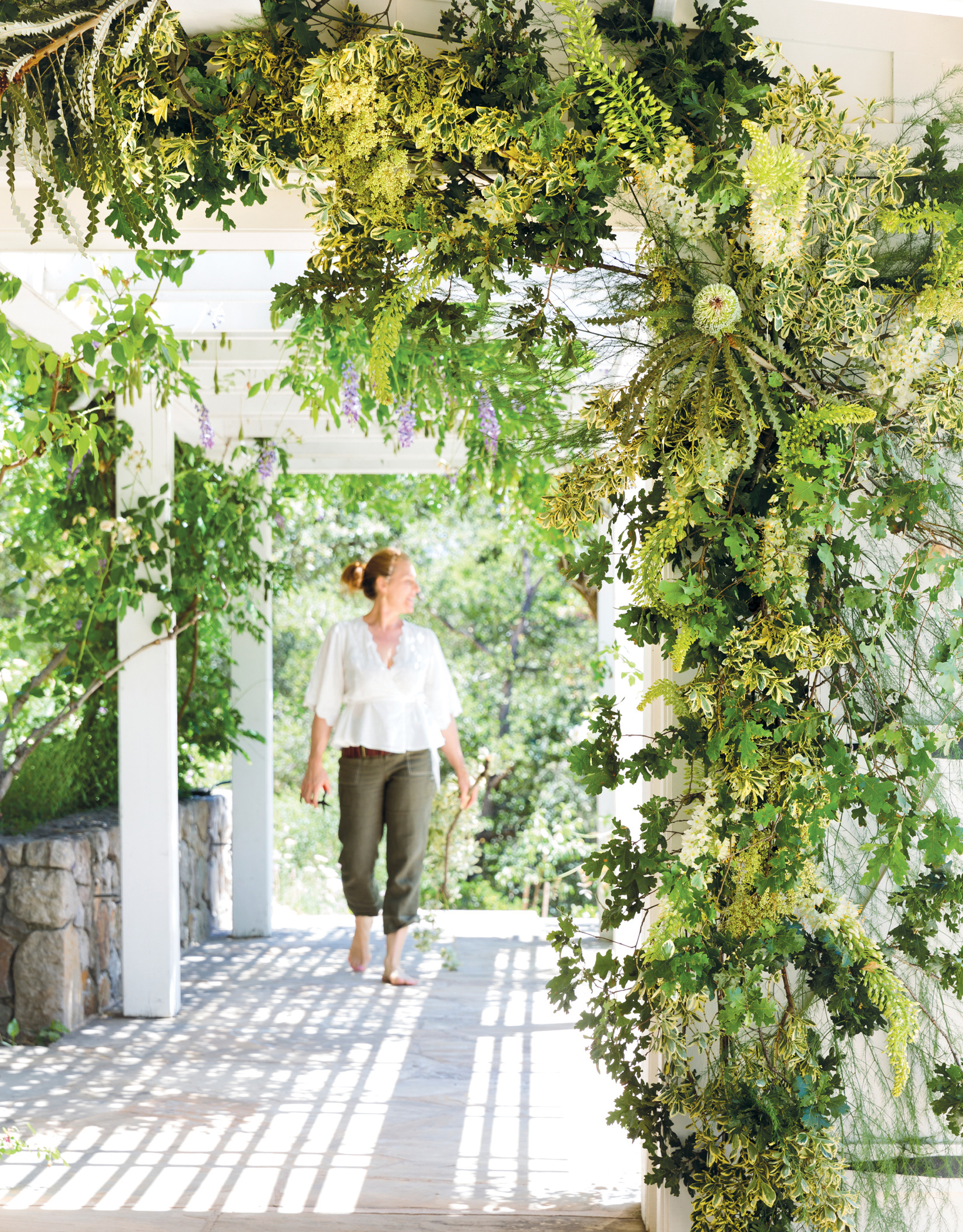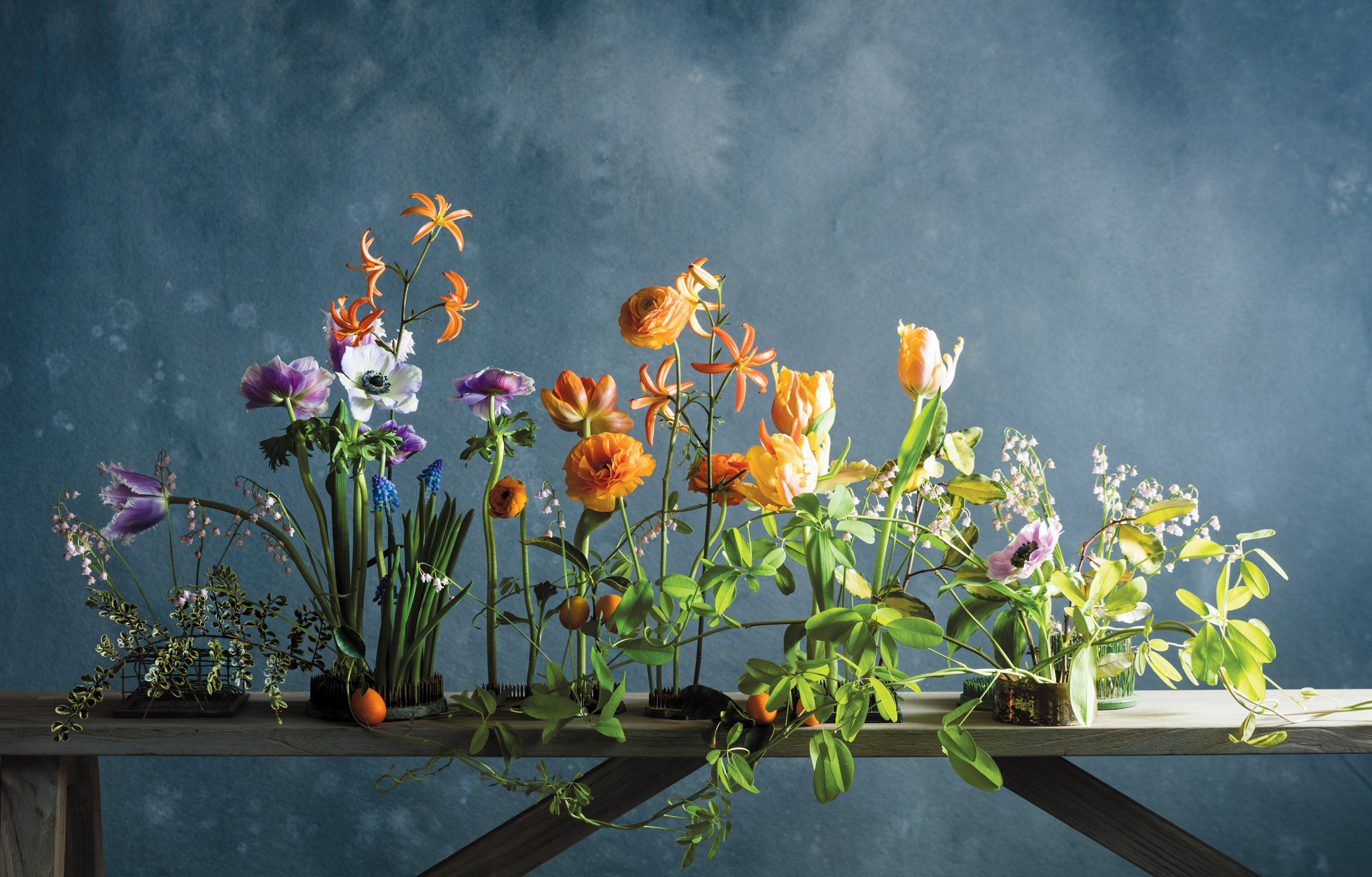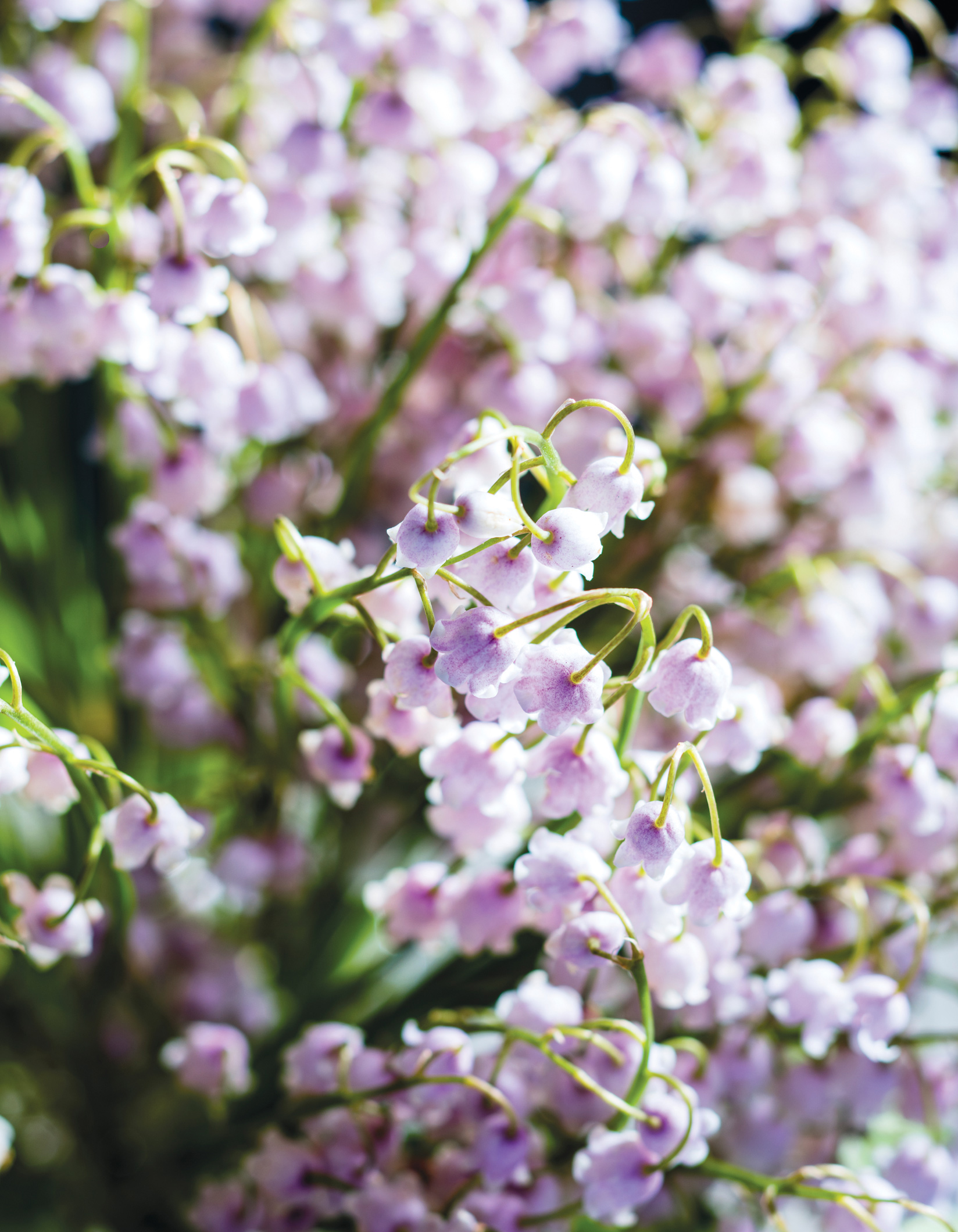Contents
Landmarks
Print Page List
acknowledgments
I am grateful to the remarkable team of professionals who helped me capture this year in flowers.
First, to Leslie Jonath, my agent, who never gives up on me and is always there with the next bright idea. My thanks, also, to:
Photographer Erin Kunkel, who not only lent me her brilliant vision for this book, but also her California home for one of our photo shoots.
Julie Michaels, who has been able to tell my story better than I could.
Glenn Jenkins, who always produced just the right vase or backdrop for every shoot, and who remains king of the laydown.
Editor Lisa Regul, who has patiently waited out the cycle of the seasons, hoping for us to finish on time.
Emma Campion, art director extraordinaire whose vision of beauty I am always happy to step into; Lisa Schneller Bieser, whose designs have brought order and beauty to the layout; and production manager Jane Chinn, for her color work.
Yuko Yamamoto, dear friend and co-conspirator in all things tasty and beautiful.
Sarah Silvey, supporter and chosen sister.
Kathryn Kenna and James Blackmon, our superb hosts in San Francisco.
Max Gill, brilliant friend whose tiddles and bits from his magical garden can be found on nearly every page of this book.
Monica Rocchino and Morvarid Mossauar-Rahmani for your help and support.
My sister Simone, for her steadfast support, and my niece Avalon Wood for being an excellent model.
Lydia Mongiardo for loving and tending to my tribe in my absence.
Hannah Rahill, Anya Fernald, Ann Ernish Backen, and Howard Backen for lending their homes for our photo shoots.
And, finally, to my husband Chris, for shouldering the childcare and sharing my vision.
about the author
In her twenty-eight years in business, ARIELLA CHEZAR has created designs for hundreds of weddings and events, including Christmas at the White House. She has taught her popular flower workshops in France, Korea, China, the Netherlands, Mexico, and in numerous cities throughout the US. Her bestselling book, The Flower Workshop , based on those classes, was published by Ten Speed Press in 2015.
Currently the artistic director of FlowerSchool New York, Ariella has lectured at botanical gardens and museums around the world, including as guest artist at the Museum of Fine Arts in Boston.
Ariella began her career working with two brilliant floral designers in the Berkshires, Pamela Hardcastle and Barbara Bockbrader. Her first business was selling holiday wreaths on a New York City street corner. In 1998, Ariella moved to San Francisco, where she began designing in a more open and abundant style, reacting to the floral bounty of the West Coast. While there, she wrote Flowers for the Table . Ariella moved back to the Berkshires in 2003, where she lives with her husband and two children. She and her husband purchased Zonneveld Farm in 2013.
As a designer, Ariellas work can be seen in issues of Martha Stewart Weddings , Oprah Magazine , Garden Design , Town & Country , Veranda , Harpers Bazaar , Vogue , Flower magazine, Victoria , and Sunset .
JULIE MICHAELS has been an editor at the Boston Globe and New England Monthly magazine. She has written for the Globe , the Wall Street Journal , and the New York Times , as well as numerous magazines. A principal in Spence & Sanders Communications, Julie tends a large vegetable and flower garden in West Stockbridge, Massachusetts.
spring
In the spring, at the end of the day, you should smell like dirt.
MARGARET ATWOOD
SPRING IS A TEASE. We wait patiently through March rains and the false starts of April, and then one day, tiny crocuses pop up in petticoat colors. The season has turned at last!
While were waiting for our own backyard to bloom, we can gather a wide array of spring blossoms from the supermarket, which features pots of colorful primroses and tiny Tte--tte daffodils. These always go right into my shopping cart and onto a kitchen windowsill. Or I might gather several pots of these flowers and plant them in an antique soup tureen, fashioning a centerpiece for the dining room table.
Narcissus are the first bulbs cut from my own beds, and they are a wonderful surprise since many naturalize and produce more flowers each year. Im partial to some of the older varieties like Actea with its tiny pheasants eye, or the elegant, all-white Thalia. They are also generous in that narcissusand tulipsare bulbs that vary in their bloom times. You can plant early, midseason, and later varieties so you have blossoms from March through early June.
I cant think of a spring that doesnt include at least one new tulip variety, since more colors and sizes are being hybridized each year. I shop for them like other women shop for shoes. This seasons favorites include La Belle Epoque, a yellow-beige-pink-peach blossom; the plummy Secret parrot; and the purple-with-white-fringe Cummins.
Youll notice most of my spring arrangements use very little foliage. I believe these flowers look best gathered into simple bouquets, often of a single color. In this, I take my inspiration from nature. Such early bloomers grow outdoors when trees are bare and they have the garden to themselves. Why not present them that way?
This is especially true for tulips that bend and sway when on display, creating their very own ballet. Its often best to let them dance alone. I suggest you find an unusual vase, or a collection of smaller vases, in which to showcase these flowers. In doing so, you can create elegance from simplicity.
Hellebores are the first perennials I harvest as my backyard awakens to the spring sunshine. These dusty mauve and celadon soldiers show up in early March and are welcome visitors through May, though I often buy pots of them as early as February for display in my winter arrangements. They are easy to cultivate, double in quantity each season, and add sophistication to any arrangement.
Im also a fan of fritillaria in all its incarnations. These include Fritillaria imperialis, tall stalks with yellow or red blossoms; Fritillaria persica , narrow, bell-shaped flowers of rich plum-purple or green; and my favorite, Fritillaria meleagris, tiny checkerboards with nodding purple heads. I grow all of these bulbs and they frequently appear in my spring arrangements.
As Robert Frost wrote, Natures first green is gold, and its those first young, shoots of pale green and yellow that signal the early notes of spring. As March passes into April, the New England landscape fills with forsythia, wild trout lilies, and columbines, while California fields explode in yellow mustard. I like to think of all these blossoms as botanical sunshine.
Finally, spring arrives in earnest with the blossoming of magnolias and the sweet scent of lilacs. Branches of both are so dramatic that they can be gathered by the armload and arranged all by themselves. Often, they go into large urns, which I will also use for branches of white spirea or pink-and-white cherry blossoms.

